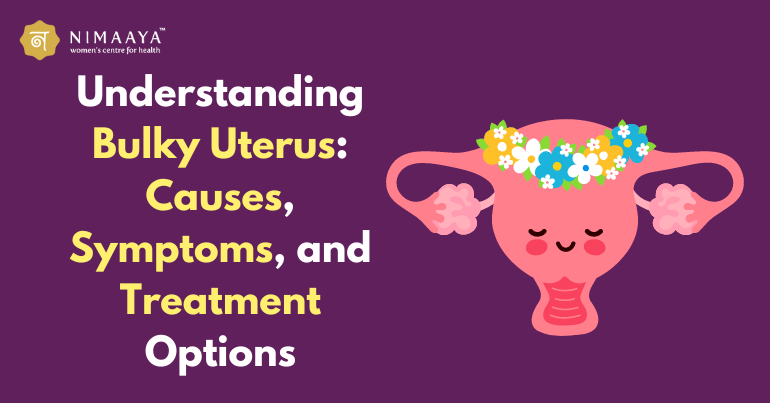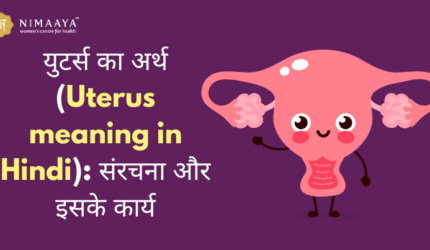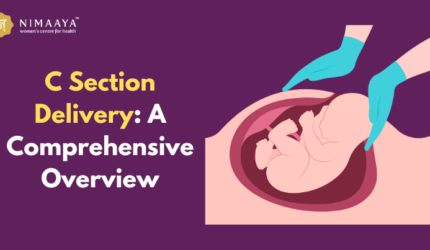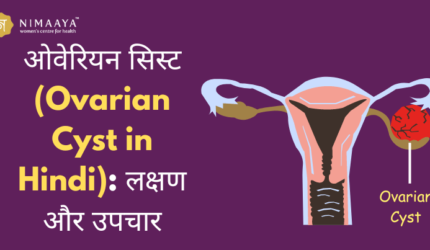Introduction
The phrase “bulky uterus” describes a uterus that has expanded. This enlargement can be due to various factors, and it’s crucial to understand them to address the condition effectively. Women experiencing this condition may face a range of symptoms that can affect their quality of life. Understanding the underlying causes and seeking appropriate treatment can make a significant difference. A healthy reproductive system is essential for the overall well-being of women. However, certain conditions can cause discomfort and health issues. One such condition is a bulky uterus. This term might sound alarming, but with the right knowledge and medical care, it can be managed effectively. This article aims to provide comprehensive insights into the condition, helping you make informed decisions about your health.
What Does a Bulky Uterus Mean?
A bulky uterus means that the uterus has increased in size beyond the normal range. This enlargement can be due to several reasons, including fibroids, adenomyosis, or other underlying conditions. The size of the uterus can vary during different life stages, such as pregnancy, but an abnormally enlarged uterus outside of pregnancy warrants medical attention.
Symptoms of a Bulky Uterus
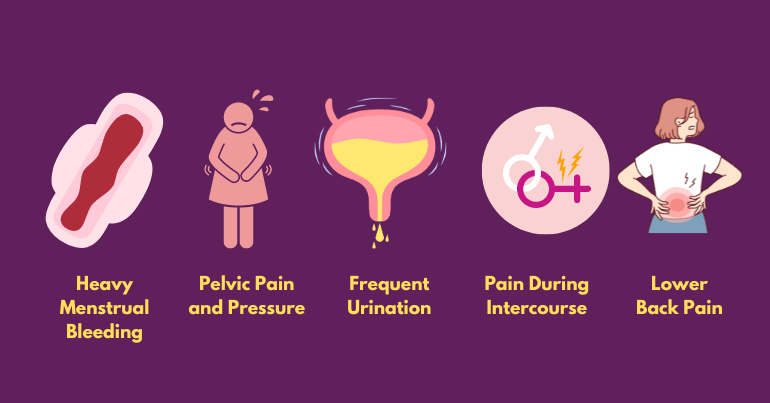
Recognizing the symptoms of a bulky or enlarged uterus is crucial for early diagnosis and effective treatment. Early detection can significantly improve management and outcomes. Understanding these signs is essential for timely medical intervention. Here are some common symptoms to be aware of:
‣ Heavy Menstrual Bleeding:
One of the most common symptoms is heavy and prolonged menstrual periods. This can also include passing large clots during menstruation. Heavy menstrual bleeding, characterized by excessive blood flow and prolonged periods, can be debilitating and disruptive to daily life. Passing large clots during menstruation further adds to the discomfort and may indicate underlying issues such as a bulky uterus or fibroids.
‣ Pelvic Pain and Pressure:
Women with a bulky or enlarged uterus may experience constant pelvic pain or a feeling of pressure in the pelvic region. This discomfort can affect daily activities and may worsen during menstruation or sexual intercourse. It’s important for women experiencing pelvic pain and pressure to consult with a healthcare provider for proper evaluation and management.
‣ Frequent Urination:
The enlarged uterus can press against the bladder, leading to frequent urination and sometimes difficulty in emptying the bladder. These symptoms can significantly impact daily life, causing discomfort and inconvenience. It’s important for women experiencing frequent urination or bladder issues to discuss them with their healthcare provider for proper evaluation and management.
‣ Pain During Intercourse:
Painful intercourse is another symptom that women with an enlarged uterus may experience. This discomfort during sexual activity can be distressing and may affect intimacy and relationships. It’s important for women experiencing this symptom to discuss it with their healthcare provider for further evaluation and guidance.
‣ Lower Back Pain:
An enlarged uterus can cause back pain due to the added pressure on the lower back muscles and spine. The pressure exerted by the enlarged uterus on the lower back muscles and spine can result in discomfort and lower back pain. This symptom can significantly impact daily activities and quality of life, underscoring the importance of addressing the underlying cause of the bulky or enlarged uterus.
‣ Infertility:
Difficulty in conceiving or recurrent miscarriages can be related to a enlarged uterus. In cases of infertility related to a bulky uterus, seeking guidance from a reproductive specialist can help explore fertility treatment options tailored to individual needs. Addressing any underlying issues contributing to infertility can increase the chances of successful conception and a healthy pregnancy.
Recognizing the bulky uterus symptoms is crucial for early diagnosis and effective treatment, as it can significantly improve management and outcomes. Understanding these signs is essential for timely medical intervention, allowing women to seek appropriate care and support. Whether experiencing heavy menstrual bleeding, pelvic pain, frequent urination, pain during intercourse, lower back pain, or infertility, seeking medical attention promptly can lead to better health outcomes and improved quality of life.
Causes of a Bulky Uterus
Understanding the bulky uterus causes is crucial for effective management. Here are some common causes:
‣ Fibroids:
These are non-cancerous growths that develop in or on the uterine wall. A bulky uterus with fibroid is a common diagnosis, as fibroids can significantly increase the size of the uterus. Uterine fibroids are non-cancerous growths in the uterus that can cause significant enlargement. They are a common cause of a bulky or enlarged uterus with fibroid often leading to symptoms like heavy menstrual bleeding and pelvic pain.
‣ Adenomyosis:
This condition occurs when the inner lining of the uterus breaks through the muscle wall of the uterus, causing it to enlarge. Adenomyosis can lead to heavy periods and pain. It is often diagnosed in women in their 40s and 50s, particularly those who have had children. The exact cause of adenomyosis is not well understood, but it is believed to be linked to hormonal changes and uterine inflammation. Treatment options range from pain management and hormonal therapies to surgical interventions in more severe cases.
‣ Endometriosis:
Estrogen dominance, often seen in perimenopause, can lead to an enlarged uterus. Although endometriosis primarily affects the lining outside the uterus, it can also cause the uterus to become bulky. This condition can lead to severe pain and infertility issues. This condition can lead to severe pain and infertility issues. Endometriosis-related inflammation can further exacerbate the symptoms, making daily activities challenging and significantly impacting a woman’s quality of life.
‣ Hormonal Imbalances:
Hormones play a crucial role in the reproductive system. Imbalances, particularly of estrogen, can cause the uterus to enlarge. This often occurs during perimenopause when estrogen levels can fluctuate significantly. High levels of estrogen without the balancing effect of progesterone can lead to an overgrowth of the uterine lining, resulting in a bulky or enlarged uterus.
‣ Pregnancy:
A bulky uterus in early pregnancy is normal as the uterus expands to accommodate the growing fetus. Because During pregnancy, the uterus naturally enlarges to accommodate the growing fetus. An enlarged uterus in pregnancy is normal and should not be a cause for concern unless accompanied by other symptoms.
Knowing these causes can help in diagnosing the underlying condition accurately and tailoring the treatment accordingly.
Impact of a Bulky Uterus on Pregnancy
A bulky uterus pregnancy can pose certain challenges, depending on the cause of the enlargement. For instance, fibroids may increase the risk of complications such as preterm labor, placental abruption, or cesarean delivery. However, many women with a bulky or enlarged uterus can still have successful pregnancies with proper medical management and monitoring. An enlarged uterus can affect pregnancy, but it doesn’t necessarily prevent it. However, it can lead to complications such as preterm labor, miscarriage, and difficulties during delivery.
Women with a bulky enlarged uterus who are planning to conceive should work closely with their healthcare provider to manage the condition and ensure a healthy pregnancy. The Nimaaya IVF Center, known for its expertise in fertility treatments, can provide specialized care for women with a bulky or enlarged uterus pregnancy. Despite the challenges that may arise, women facing a pregnancy with a uterus bulky in size can still achieve successful outcomes with diligent medical supervision and care.
Treatment Options for a Bulky or enlarged Uterus
A bulky uterus, often caused by conditions such as fibroids, adenomyosis, or endometrial hyperplasia, can lead to a variety of symptoms including heavy menstrual bleeding, pelvic pain, and pressure on the bladder or bowel. Several treatment options are available, each tailored to the underlying cause and severity of the condition, as well as the patient’s health status and reproductive plans.
1. Medications
Medication is often the first line of treatment for managing the symptoms of an enlarged uterus. Hormonal therapies, such as oral contraceptives, progestins, or gonadotropin-releasing hormone (GNRH) agonists, can help regulate menstrual cycles, reduce bleeding, and shrink fibroids or endometrial tissue. NSAIDs, or nonsteroidal anti-inflammatory medicines, have the ability to lessen inflammation and relieve pain. In cases of anemia due to heavy bleeding, iron supplements may also be prescribed.
2. Minimally Invasive Procedures
Several minimally invasive procedures can address this condition of the uterus with less recovery time and lower risk compared to traditional surgery. Uterine artery embolization (UAE) involves injecting particles into the uterine arteries to cut off blood supply to fibroids, causing them to shrink. Another option is endometrial ablation, which destroys the lining of the uterus to reduce menstrual bleeding. These procedures are particularly useful for women who wish to avoid more invasive surgery and preserve their uterus.
3. Surgical Treatments
When medication and minimally invasive procedures are insufficient, surgical options may be necessary. Myomectomy, the surgical removal of fibroids, can relieve symptoms while preserving the uterus, making it a suitable option for women who wish to retain their fertility. Hysterectomy, the removal of the uterus, is considered the definitive treatment for an enlarged uterus, especially when other treatments have failed or if the patient does not wish to retain fertility. This procedure can be performed via various approaches, including abdominal, vaginal, or laparoscopic surgery.
4. Lifestyle and Complementary Therapies
Lifestyle changes and complementary therapies can also play a role in managing a bulky or enlarged uterus. Maintaining a healthy weight through diet and exercise can help regulate hormones and reduce the severity of symptoms. Stress-reducing practices such as yoga, acupuncture, and meditation may also provide symptom relief and improve overall well-being. Additionally, dietary modifications, such as reducing red meat and increasing intake of fruits and vegetables, may help manage symptoms.
5. Alternative Therapies
Some patients may explore alternative therapies, such as acupuncture, herbal treatments, or dietary supplements, to manage symptoms of a bulky uterus. While evidence supporting the efficacy of these treatments varies, they can be used in conjunction with conventional medical treatments under the guidance of a healthcare professional. It is crucial to discuss these options with a doctor to avoid potential interactions with prescribed medications.
6. Observation and Monitoring
In some cases, especially if the symptoms are mild or the patient is nearing menopause, observation and regular monitoring may be recommended. Many women experience a natural reduction in symptoms after menopause due to the decrease in hormone levels. Regular check-ups with a healthcare provider ensure that any changes in the condition can be promptly addressed.
The choice of bulky uterus treatment depends on multiple factors, including the underlying cause, the severity of symptoms, the patient’s age, general health, and reproductive plans. A personalized approach that combines medical, surgical, and lifestyle interventions can effectively manage the symptoms and improve the quality of life for women with a bulky uterus. Patients need to work closely with their healthcare providers to determine the most appropriate treatment plan based on their individual needs and circumstances.
Conclusion:-
A bulky uterus, while potentially concerning, is a manageable condition with the right medical care. Understanding its causes, recognizing the symptoms, and exploring the various treatment options can significantly improve the quality of life for women affected by this condition. Whether it’s managing symptoms, seeking treatment, or planning a pregnancy, consulting with a skilled gynecologist is essential. The Best Gynecologist in Ahmedabad like Nimaaya IVF Center and other reputable clinics provide excellent care and support for women dealing with an enlarged uterus. Remember, early diagnosis and appropriate treatment are key to managing this condition effectively.
-:FAQs:-
Q: How do I know if I have a bulky uterus?
A: If you experience symptoms like heavy menstrual bleeding, pelvic pain, frequent urination, or difficulty conceiving, it’s essential to consult a healthcare provider for evaluation. They can perform tests such as ultrasound or MRI to determine if your uterus is enlarged.
Q: Will I need surgery if I have a bulky uterus?
A: Not necessarily. Surgery may be recommended in severe cases or if other treatments have failed, but it’s not always the first option. Your healthcare provider will discuss the best treatment approach based on your individual circumstances and preferences.
Q: Can a bulky uterus affect pregnancy?
A: Yes, a bulky uterus can pose challenges during pregnancy, depending on its size and underlying causes. Fibroids, for example, may increase the risk of complications such as preterm labor, placental abruption, or cesarean delivery. However, with proper medical management and monitoring, many women can still have successful pregnancies.
Q: Can I still have a healthy pregnancy with a bulky uterus?
A: Yes, many women with an enlarged uterus have successful pregnancies with proper medical care and monitoring. However, it’s essential to work closely with your healthcare provider, especially if you have fibroids or other underlying conditions, to ensure a healthy pregnancy outcome.
Q: What is the average size of a bulky uterus in mm?
A: The size of a bulky uterus can vary depending on the underlying cause and individual factors. In general, a bulky uterus may measure larger than usual, but specific measurements can vary widely. It’s essential to consult with a healthcare provider who can perform imaging tests, such as ultrasound or MRI, to assess the size of the uterus accurately and determine the appropriate course of treatment.
Q: How is a bulky uterus diagnosed?
A: Diagnosis typically involves a combination of a pelvic examination, imaging tests such as ultrasound or MRI, and sometimes procedures like hysteroscopy. These help in visualizing the uterus and identifying any abnormalities or underlying conditions.
Q: How does a bulky uterus affect fertility?
A: An enlarged uterus can impact fertility by causing difficulty in conceiving or recurrent miscarriages. It can also lead to complications during pregnancy, such as preterm labor or difficulties during delivery. Seeking guidance from a reproductive specialist can help explore fertility treatment options tailored to individual needs.

